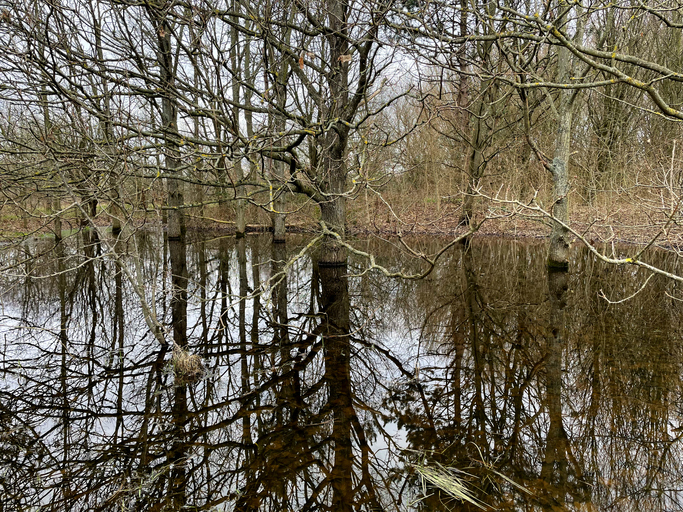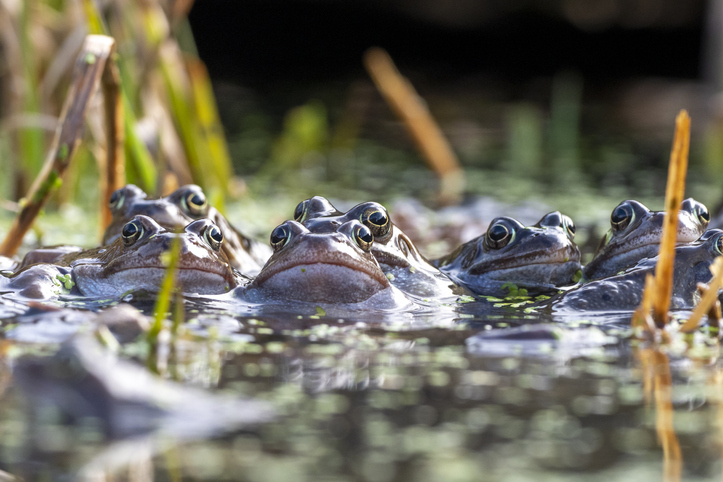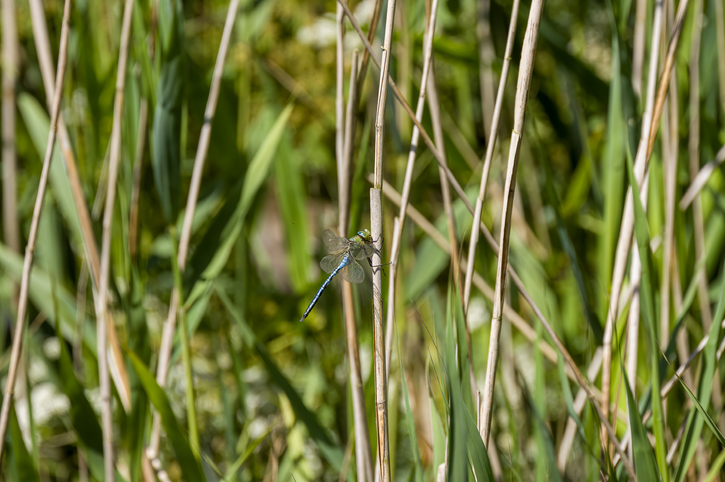Mists rising, green-brown water bubbling, and the lurking shadow of a monster emerging from the deep – that’s the picture that swamps evoke in lots of people. The eponymous (yet, entirely mythical) swamp monster and still, secluded scenery means that these locations are often slightly misunderstood – when, in fact, they are super beautiful and incredibly rich and biodiverse habitats for loads of great animals (no monsters)!
We’ll come clean right at the top here – swamps are more commonly found in the US, with comparative bodies of water known as marshes, wetlands, and fens over here in Blighty. However, we think swamp is a brilliant word, so we’re going to use it throughout as we delve deep beneath the surface to uncover what they are, where you’ll find them and what animals live there.
Let’s dive in!
So, exactly, what is a swamp?
A swamp is a bit of land that is typically filled with water, surrounded, and underpinned by plant life and a rich habitat for all kinds of brilliant animals. Aquatic and semi-aquatic animals love to call swamps home as there are loads of nutritious plants to munch on, other beasties to hunt, places to hide and a lot of naturally occurring water.

To truly be a swamp, the water must be forested, whilst marshes are filled with herbaceous plants, and fens must have a neutral or alkaline water make-up. Wetlands are a bit of a catch-all term, and there’s plenty of overlap between all four. Confused? Never mind, let’s jump into the good bit, what beasts are lurking beneath the surface?!
What animals live in swamps?
From amphibians to insects, birds of prey to ducklings – loads of brilliant animals live in the UK’s swampy parts. Here’s a few to look out for.
Ducks, Geese and Swans
Almost every parent will testify to this – ducks are a godsend on a walk with a less-than-compliant youngster. “Come on, let’s go find the quack quacks” is the calling card of many a tantrum-fatigued parent, making them a super popular sight throughout the swampy wetlands of the UK.
You might have heard this advice before, but we’d always recommend leaving the stale bread at home if you’re planning on feeding ducks, geese, or swans. A white slice is not great for any of our water birds, so we’d always suggest bagging up some oats, lettuce, or seeds. These are much easier for the birds to digest, and just as yummy!
Frogs, Toads and Newts
Whilst the water-dwelling birds listed above will actively come and seek out human visitors (and stick around if your goodies pass the taste test), the amphibians of the swamp can be a little harder to locate. Often, you’ll have to rely on your ears, rather than eyes, to find frogs, newts and (in particular) toads. Their croaking and bellowing can be a bit of a giveaway, when they’re trying to stay incognito from predators.

Amphibians can be a little nomadic, but typically return to their favourite body of water to reproduce and set their frogspawn, toadspawn or newt larvae free. In the UK, look out for the common frog and the common toad. Despite their dreary names, we reckon they’re very interesting.
Birds of Prey
Wherever you’ll find a buffet of small animals, you’ll undoubtedly find birds of prey circling above looking for their next catch. Look out for harriers, hobbies and even eagles throughout the wetlands of Scotland and southern England. You’ll often find them patiently hovering and circling above the water – waiting, waiting, waiting for the perfect chance to sweep down and scoop up a fish or dragonfly.
Dragonflies and Damselflies
Slight spoiler alert in the previous paragraph, so you won’t be surprised to learn that dragonflies and damselflies are a common sight throughout the swampy bits of Britain. Their long, colourful bodies and fascinating way of moving makes them a brilliant sight on our wetlands. Just don’t draw too much attention to them when you’ve spied one, otherwise a hobby bird might come swooping down from above!

Where do you find swamps?
There are swamps all around the world and throughout the UK, but keeping things local to Scotland, we think we should highlight the Scottish Rainforest – a series of watery woods along the west coast in the hyper-oceanic zone!
The rainforest is made up of multiple forests and nature reserves across a 30,000-hectare spread. If you’re thinking of visiting some of the UK’s most spectacular swampland, you could do a lot worse than Taynish National Nature Reserve – a spectacular peninsular rich with swamps, forests, glades and so much more. Beautiful and biodiverse in equal measure, Taynish is a great day out for little explorers.
Make sure you take a notebook if you go, so you can jot down all the little beasties you spot along the way!
Of course, if it’s the mysteries and majesty of the underwater world you’re looking for, Deep Sea World is the perfect place to start. Book now for a brilliant day out for all ages!
